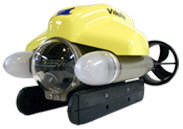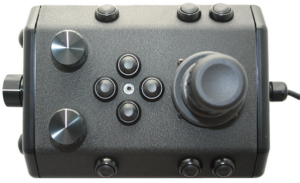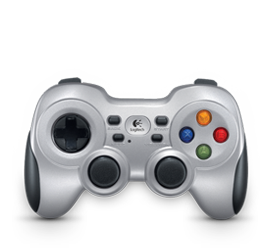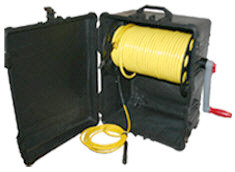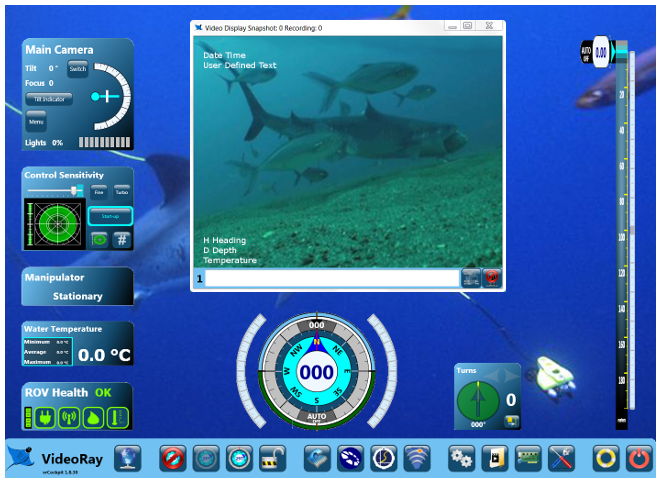Additional ReferencesSee the Hand Controller section of the Equipment Guide for information on how to control the thrusters. See the Piloting section of the Operations Guide for tips on how to pilot the ROV. See the Control Sensitivity section of the VideoRay Cockpit Guide information on tuning the control sensitivity. [ Educational Resources Library ] [ Help us improve this document ] [ Print this page |
PropulsionROV Propulsion is provided by two horizontal thrusters and one vertical thruster that are controlled from the surface using the joystick and depth control knob on the hand controller. Each thruster motor turns a propeller to create the desired thrust. Each thruster shaft is sealed with a cartridge seal to prevent water intrusion. These cartridge seals are filled with oil and will wear out over time. Worn cartridge seals need to be replaced. Inspection consists checking the amount of oil, and for any signs of contamination or other signs of wear. When the oil level is less than half of the volume of the cartridge seal, the seal should be replaced.
In additional to manual piloting, the VideoRay Cockpit control software provides a pilot assist mode, Auto Depth. Auto Depth is described in the Operations Guide. The horizontal thrusters use counter rotating propellers to avoid torque induced roll while thrusting and for better performance. Additionally, VideoRay Cockpit includes variable control sensitivity and power management to further tune the performance of the thrusters.
|






